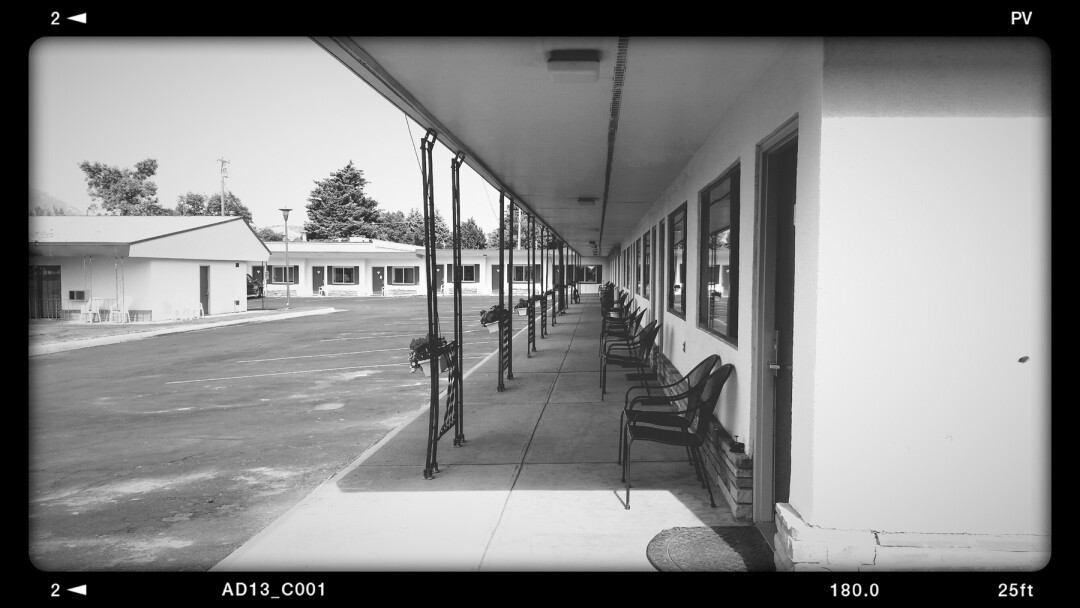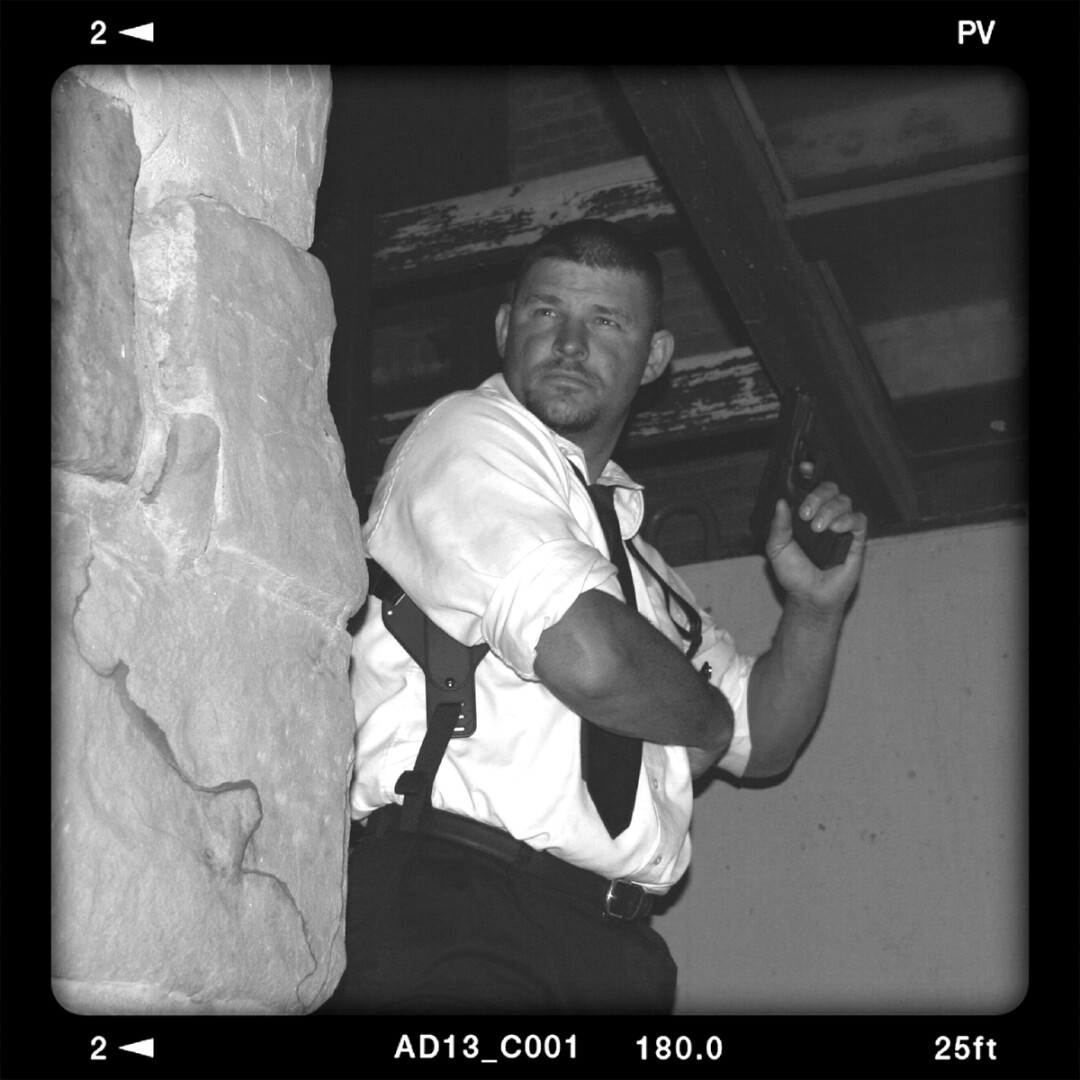Book 1 of the Bozeman Apocalypse Series
Downtown Noir
Angie Ripple | Friday Jul. 1st, 2016
I don’t often read for fun, but when I won a copy of Patrik Hill’s Downtown Noir at a recent Bozeman Maker’s Mark I couldn’t resist diving into the Bozeman Apocalypse crime novel. Having no idea what to expect I was instantly enthralled with the story twisting and turning through the alleyways of Bozeman and the country, and as it came to an end I couldn’t wait for the next installment.
Downtown Noir is a collection of short stories that, in the beginning, seemingly have nothing to do with one another, and then as the story progresses, we start to see a culmination, a blending, of the stories, to form a singular narrative. As many tributaries of a major river come together, eventually it all flows to one channel. It does center around a central character, or two, and the various viewpoints they share. It’s a bit of the movies Pulp Fiction and The Maltese Falcon, with a dash of Dick Tracy and Black Hawk Down thrown into a blender, and then reprinted and pasted on cheap dime-store pulp paper. - Patrik Hill
AR: Downtown Noir, this first in the Bozeman Apocalypse series, has deep roots in downtown Bozeman, what do you know that the passerby may not?
PH: Downtown Noir is a vehicle that gets to explore some of the darker sides of Bozeman. While it is a fiction book, there is certainly a lot of authenticity that lends itself to the mythology of the book, the storyline, and ultimately the characters that inhabit this particular version of our world. When I was doing the research for the novel, there were a lot of little places in Bozeman that, after living here for 17 years even I didn’t know about, and only upon a walkabout through the corridors of downtown did I discover them. There are certain alleyways in the book that a casual observer might not take notice of. There are buildings and structures that once stood in certain areas but have been since demolished, or renovated. The novel was never intended to be a time capsule, but in a way it is because some of those structures, as I’ve mentioned, no longer exist, except in memory and story. Also, as someone who has worked downtown, it offers a flip side view, I think, to some of the sights, sounds, as well and smells that you might not get from your side of the counter.
AR: Bozeman is rarely portrayed with such grit, what did you draw on to provide that in the book?
PH: The origins of the novel stem from when I was in college, and was working as a delivery driver. Being a 30 year old student, going back to school, and working in a restaurant that often delivers until the wee hours of the night / morning, you see some of the strangest things. Maybe it was strange to me because I was seeing these events with different eyes than when I was 18 years old. Often times I would leave a location and my mind would be racing, in a sense trying to understand and justify what I had just seen. I have been to places like the Emergency Room at midnight when ambulances were rolling in. I’ve been to flop houses where people answered the door in their skivvies with a pipe in their hands. It was always something of an adventure when you would deliver to some of these places. So, as I’d be making my rounds around town, my mind would be wondering, “How in the world does this person get to this stage?” As a form of entertainment I would then create back stories to these characters and try and see if I could make it plausible to the situation at hand. So the stories and characters you meet in Downtown Noir are, to a sense, a real life person and their story is something of a real life story, at least in my mind. A lot of it is, too, how many times have you driven past a certain spot and said to your spouse, “Hey, how long has that been there?” So that could be an alleyway, or a restaurant, or even a fixture of the downtown nightlife that you’ve never noticed before.
AR: This must have been a fun book to write, what was the best part?
PH: One of my particularly memorable experiences in creating Downtown Noir was the research, creating places and then moving them around like chess pieces on a board was certainly a highlight. It was a lot of fun going into buildings, taking photos, and then putting those images into a description, almost as if I was concocting a recipe. One of my particularly memorable was trying to describe white washed tin tiles on a business ceiling that was about 20 feet up. The other customers in the shop must have thought I was nuts as I stood, staring at the ceiling, trying to find the right word. But I also really loved to create the characters and watch as their own backstories unfolded, and then using that story to drive the overall narrative in the novel. A long time ago I studied in the field of journalism so to use those traits and grill my friends and use them as character models, it became something of an adventure to see how many traits that I could put together to create a new character. There was a lot of Frankenstein work with the characters, and even the names are often combinations of friends and family. And the same goes for the locations. Researching the various locations, making the pieces fit, and then creating a narrative that I know and recognize, but also becomes something of a mystery because while it is downtown Bozeman, it’s not necessarily the downtown that we all might know and love. And the music… I use music to help me create the theme for each chapter in the book. Again, this was a conscious decision and so, I feel, each chapter has a distinct sound to it. For example, when I was writing the chapter “Dime Store Whores” I was listening to a lot of Marilyn Manson and Nine Inch Nails as inspiration. When it came time to write “The Ballad of Agent Diabrava” I was jamming out to a lot of Pearl Jam and Soundgarden, mostly because of the location, to help me get that groove. I think that at one point I even had The Maltese Falcon playing on repeat because it was helping set the tone for a few of the scenes. I’m a very visual kind of guy, so when I write, I want to use these other mediums to help portray, as well as convey, the particulars of the story. If there is a fun part to indi-publishing, it’s that I get to follow my own rules, and I owe allegiance to none other than myself and my readers, so I have complete and total control of the layout, the content, even down to the font choice and the stylings. People will notice that I really, really like the word “fella.” Why? Who knows, but it’s such a fun word to work with.
AR: Who should read Downtown Noir?
PH: I would love to have everyone read it, but the reality is that it’s written as a crime novel, on purpose, and as such it’s pretty dark and gritty. I used the definition of NOIR on one of the first pages to also give the reader a sense of what’s to come; it certainly wasn’t an off-hand choice. However the reality is that this is a pretty mature book. If it were a movie it would definitely be an R-rated movie. When I wrote it, I was writing from the perspective of, “What would scare the living hell out of me?” As such, there are a lot of mature themes that make their way through the book, and definitely not for the faint of heart. My wife has joked that she won’t read it because knowing what it did to me, as the author, she definitely doesn’t want to go near it. For one of the chapters I did do a lot of research on FBI crime statistics and even managed to weave in some actual serial killer lore. So, to that end, I don’t hold anything back. Further, there are few points in the book that leave very little to the imagination, so I guess, I would have to say, “Read At Your Own Risk.”
AR: When can we expect the next installment?
PH: This is actually the subject of much debate, right now. I have the title for the novel, it’s going to be titled Thru the Glass Darkly: Retribution, but I’m just not sure. I was hoping to have the follow-up ready this fall, as the storyline is actually one that I’ve been working on for a while, near side by side with the storyline to Downtown Noir, however as I was talking to my editors, I wasn’t happy with the ending that I wrote, and thus we have decided to delay the release until next spring, at the earliest. There’s going to be a lot of artwork that is going to go with the particular story and so by reworking some of the storyline, it will give the artists I’m working with a chance to really beef up that art, and as I’ve mentioned earlier, I am a very visual kind of guy. So if I can make the story a bit stronger in a few places, and let the art team really work on the design, I think that the reader is going to be left with a far superior novel. So, for sure the earliest it’s going to be is 2017. However, that leaves the design crew some much needed time to really reel in the talent we want. Right now the goal is to have models from Bozeman, as well as Idaho, coming in to do photo shoots. I am working with some other up and coming companies that are going to allow help us with some fantastic product placement and the overall effect will be to really drive home the story, but also to give it the feel that it could be the story, or could it be a weird interpretation…? As the writer, there will be a little bit more left up to the readers, maybe, than what we saw in Downtown Noir.
| Tweet |
